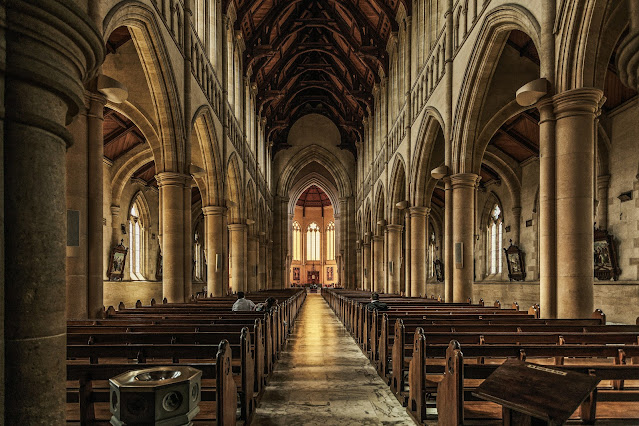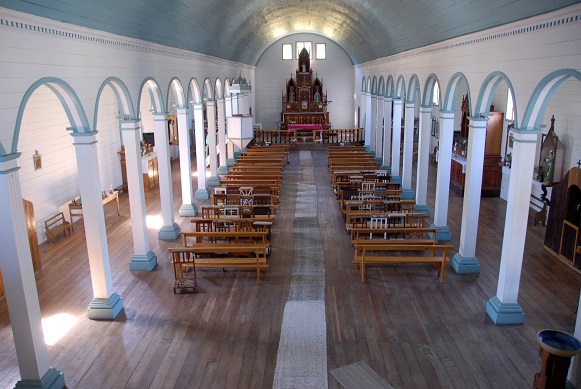What Audio Visual Technology to Consider for Your Church Building Project?
We hope you enjoy reading this piece on the application of audio-visual technology in church construction projects. It is imperative that, whether you are in the process of building a new church from the ground up or remodeling an existing one, you give serious thought to the part that audio-visual technology may play in elevating the quality of the worship service. In this day and age of technology, if you want to help create a more immersive and engaging experience for your congregation, adding audio-visual features to your church can be of great assistance. There are a variety of alternatives available that can change your venue into a location where people can connect with their faith on a deeper level. These options range from high-quality sound systems to video projection and lighting solutions. This article will discuss the significance of audio-visual technology in churches, as well as offer helpful insights into the factors that should be taken into consideration when implementing such technologies into the construction of a new church. Let's jump right in and find out how the incorporation of audio-visual technology into your place of worship may completely transform it!
The Value of Audiovisual Equipment in Religious Institutions such as Churches
A significant contribution that technology may make to the improvement of the worship experience in a place of worship is the use of audio and visual equipment. The days are long gone when it was sufficient to transmit messages to the crowd with nothing more than a straightforward microphone and projector. In today's world, churches are increasingly using cutting-edge audiovisual technology in order to produce a more immersive and engaging atmosphere for their congregations.
The capacity of audio visual technology to enhance the message that is being communicated is one of the primary reasons why this technology should be utilized in places of worship. It doesn't matter if it's a sermon, a musical performance, or a video presentation; having sound that is both clear and of excellent quality guarantees that every word will be heard by everyone in the room. Not only does this help in retaining the focus of the congregation, but it also makes it possible for individuals in attendance who have hearing difficulties to take part in the service in its entirety.
In addition, the incorporation of visual components such as projectors and screens can significantly improve the overall quality of the worship service. During sermons, they make it possible for pastors and other presenters to display pertinent scriptures, photos, videos, or even live streaming of content. This visual aid not only assists in repeating the message, but it also creates an atmosphere that is visually appealing, which attracts the attention of people and makes them more open to what is being presented.
A sense of community can be fostered by the use of audio-visual technology within the church, in addition to the message being conveyed more effectively. Churches can reach out to members who are unable to physically attend services or events due to a variety of reasons, such as illness or distance from the church. Live streaming services or events can be seen online. Because of this commitment to inclusiveness, everyone is welcome to participate in the act of worship, regardless of where they are physically located.
In general, audiovisual technology has evolved to the point where it is now an essential component of contemporary church services. Not only does it improve communication, but it also generates an immersive environment that encourages engagement and participation among members of the congregation. When churches begin construction projects, one of their first priorities should be to ensure that they will be able to offer an edifying worship experience to all of their members. This can be accomplished by giving careful consideration to audio-visual equipment.
What Kind of Audio-Visual Equipment Should Be Considered for Your Church Construction Project
When planning the construction of a new church, it is essential to give careful consideration to the audio-visual equipment that will be installed in order to improve the congregation's overall experience of worship. When it comes to making these judgments, there are a number of important aspects to keep in mind.
Dimension of Church Building
First and foremost, give some thought to the dimensions of your church building and its organizational structure. This will help establish the necessary audio visual equipment that is required to guarantee that everyone who is attending has access to clear sound and visibility. Investing in a professional-grade sound system for larger venues that has numerous speakers that are spread out strategically across the sanctuary may assist ensure that the sound is distributed evenly and prevents any echoes or distortion from occurring. Visibility can also be improved by seriously contemplating the installation of high-quality projectors or huge LED displays. This is especially beneficial for individuals who are seated some distance away from the pulpit or stage.
Audio Visual Technology Flexibility
The adaptability of the audio-visual technology as well as its user-friendliness are also very crucial aspects to take into account. It is of the utmost importance to purchase machinery that even individuals with limited technical expertise will have no trouble operating, whether they are staff members or volunteers. Keep an eye out for control systems that are easy to use and that enable smooth integration between various components such as microphones, speakers, projectors, and screens.
Live Streaming Cabailities
In addition, if you are able to incorporate live streaming capabilities into your church's audio visual system, you will be able to significantly extend your reach beyond the walls of your building. Live streaming services give persons who are unable to attend an event in person the opportunity to engage remotely in light of the growing number of people who are seeking spiritual connection online. Additionally, the archiving of events and sermons for later viewing is made possible by this technology.
Lighting
Last but not least, don't overlook the importance of lighting! During events like church services and other gatherings, improper lighting design can have a substantial negative impact on the entire ambience. It would be a good idea for your church to put in dimmable lights that can be adjusted to fit a variety of activities and states of mind that take place there.
You can create an immersive worship experience that engages all guests by carefully considering these criteria when picking audio visual equipment for your church construction project. This will allow you to embrace modern improvements in communication technology while also creating an experience that is engaging.
The Many Ways That Churches Can Benefit From Utilizing Audio-Visual Technology
The incorporation of audio and visual technology into places of worship provides a number of benefits that are absolutely extraordinary. Not only does it improve the quality of worship as a whole for the congregation, but it also makes it easier to convey messages and creates an environment that is more interesting to participate in.
The ability of audiovisual technology to communicate with a greater number of people is one of the most significant advantages it offers. Churches now have the ability to interact with folks who may not be able to physically attend services due to the availability of live streaming capabilities. This is of utmost significance during times when individuals are unable to congregate as a result of unforeseen events or constraints. Churches have the ability to reach more people and ensure that everyone has access to spiritual counsel and support by integrating audio visual technology in their services.
In addition, audio-visual technology makes it possible to have a worship experience that is more immersive. Congregants are able to completely engage with the sermons, music performances, and other aspects of the service since the sound systems and displays are of such a high quality. A deeper sense of spirituality is fostered as a result of the creation of an atmosphere in which individuals feel connected to one another and inspired.
The adaptability of audiovisual technology is yet another of its many advantages. Churches may make use of projection screens or LED panels to exhibit sermon notes, scriptural passages, song lyrics, and other forms of multimedia content such as movies or still photos. This not only helps people who may have difficulty reading small type or following along in traditional hymnals, but it also adds a dynamic element to the service that catches attention and promotes active participation. people who have difficulties reading small print or following along in traditional hymnals may benefit from this.
In addition to this, audio-visual technology has the potential to improve the general atmosphere of the church building itself. The worship service can be made more immersive for the congregation by synchronizing the lighting system with the music or the pastor's sermon. In addition, specific areas of the church building, such as stained glass windows or artwork, can be highlighted by architectural lighting designs, which further contributes to the building's appeal from an aesthetic standpoint.
To summarize, integrating audio-visual technology into church structures provides a multitude of benefits, each of which significantly improves the experience of worship for the congregation. These technologies offer opportunities for spiritual development and connection that have never been possible before. For example, live streaming capabilities allow for a greater audience to be reached, and immersive environments may be created through the use of high-quality sound systems and visually engaging displays. Every person who walks through a church's doors has the opportunity to have their spiritual journey enhanced and their sense of community strengthened if the church embraces audio-visual technology and creates a more interactive and welcoming venue for worship.
Conclusion
To summarize, the use of audio visual technology into the construction of your new church building can significantly improve the worship experience for both the congregation and any guests that attend. You may make the setting more immersive and engaging for everyone by making investments in high-quality sound systems, video displays, and lighting equipment. This will enable everyone to take part in the service to the fullest extent possible. There are a variety of positive outcomes that can result from the implementation of audio visual technology in places of worship, including enhanced communication and accessibility, higher levels of attendance, and deeper connections with younger generations. It is imperative that religious institutions modify their practices and become more accepting of new technological tools in order to successfully communicate their message to the community and maintain connections with members of that community as technology continues to improve. Therefore, when you begin the process of building a new church, make sure that you give serious consideration to the various audio visual technology options that are available to you. These options have the potential to completely change your worship space into a place that fosters inspiration and spiritual development.



